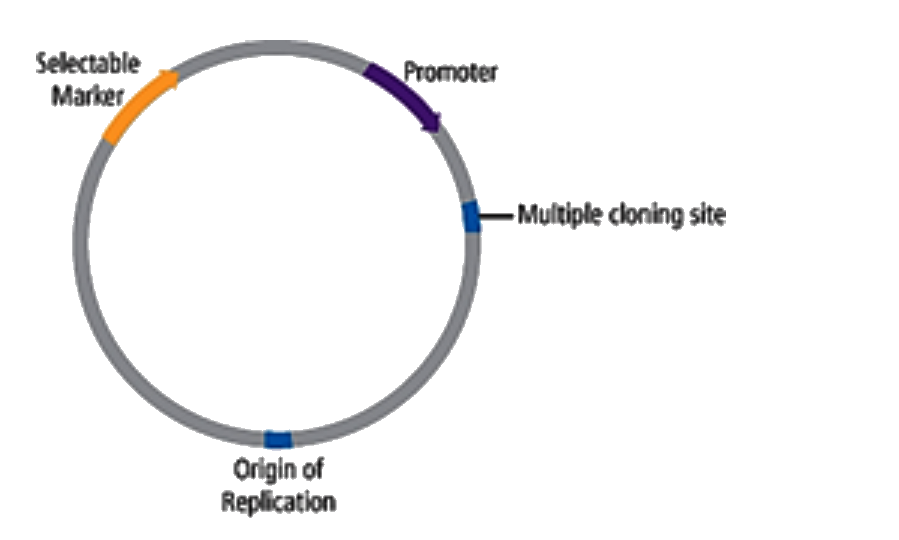Tumor inducing plasmid transforms
Nematodes
Bacteria
Fungi
Several dicot plants
The correct Answer is:D
Step-by-Step Solution:
1. Understanding the Tumor Inducing Plasmid: The question refers to a tumor-inducing plasmid, which is a specific type of plasmid that can cause tumors in plants. The most well-known example is the Ti (tumor-inducing) plasmid.
2. Identifying the Tumor: The crown gall tumor is a type of tumor that affects several dicot plants. It is caused by the bacterium Agrobacterium tumefaciens, which transfers the Ti plasmid into the plant cells.
3. Role of Agrobacterium: Agrobacterium tumefaciens is a soil bacterium that is capable of transferring its Ti plasmid into the cells of susceptible plants, leading to the formation of crown gall tumors.
4. Target Plants: The Ti plasmid is specifically used to transform dicot plants, which are a group of flowering plants that have two seed leaves (cotyledons). Examples include beans, tomatoes, and roses.
5. Options Analysis: The question provides options: nematodes, bacteria, and fungi. Since the crown gall tumor specifically affects dicot plants and not the other organisms listed, we can conclude that the Ti plasmid is not used to transform nematodes, bacteria, or fungi.
6. Final Answer: Therefore, the correct answer to the question "Tumor inducing plasmid transforms" is "several dicot plants."
---
Topper's Solved these Questions
- BIOTECHNOLOGY-PRINCIPLES AND PROCESSESBOOK - AAKASH INSTITUTE ENGLISHCHAPTER - BIOTECHNOLOGY-PRINCIPLES AND PROCESSESEXERCISE - ASSIGNMENT SECTION-A (Objective Type Questions)
25 Videos
- BIOTECHNOLOGY-PRINCIPLES AND PROCESSESBOOK - AAKASH INSTITUTE ENGLISHCHAPTER - BIOTECHNOLOGY-PRINCIPLES AND PROCESSESEXERCISE - ASSIGNMENT SECTION-B (Objective type questions )
18 Videos
- BIOTECHNOLOGY-PRINCIPLES AND PROCESSESBOOK - AAKASH INSTITUTE ENGLISHCHAPTER - BIOTECHNOLOGY-PRINCIPLES AND PROCESSESEXERCISE - Try Yourself
17 Videos
- BIOTECHNOLOGY AND ITS APPLICATIONSBOOK - AAKASH INSTITUTE ENGLISHCHAPTER - BIOTECHNOLOGY AND ITS APPLICATIONSEXERCISE - ASSIGNMENT (SECTION - D) (ASSERTION - REASON TYPE QUESTIONS)
10 Videos
- BODY FLUIDS AND CIRCULATIONBOOK - AAKASH INSTITUTE ENGLISHCHAPTER - BODY FLUIDS AND CIRCULATIONEXERCISE - Assignment Section - D Assertion - Reason Type Questions
9 Videos
Similar Questions
Knowledge Check
Read the given statements and select the correct option.
Statement 1 : The tumour inducing plasmid (Tiplasmid) acts as a cloning vector in recombinant DNA technology.
Statement 2: The Ti plasmid which is used in the mechanisms of delivering genes to a cell remains pathogenic.A1. Both statements 1 and 2 are correctB2. Statement 1 is correct but statement 2 is incorrectC3. Statement 1 is incorrect but statement 2 is correctD4. Both statements 1 and 2 are incorrect
The part of Ti (tumour inducing) plasmid transferred into plant cell DNA is called :
View SolutionA plasmid is
View SolutionIdentify the type of vector represented in the diagram given below.

(a) An expressable plasmid
(b) A tumor inducing plasmid
(c) Plasmid which expresses in two hosts
(d) The plasmid to be constructed
View SolutionWhat is the source of the Ti (Tumor inducing) plasmid which is modified and used as a cloning vecotr to deliver the desirable genes into plant cells?
View SolutionThe plasmid
View SolutionRead the following statement and choose the correct option:
I. Agrobacterium tumefaciencs, a pathogen of several monocot plants, is able to deliver a piece of DNA known as "T-DNA".
II. The tumor inducing (Ti) plasmid of Agrobacterium tumefaciens has been modified into a cloning vector, which is more pathogenic to the plants.
View SolutionThe tumour -inducing ( Ti ) plasmid has now been modified into a cloning vector which is no more pathogenic to the plants but is still able to use the mechanisms to deliver genes of our interest into a variety of plants because Ti plasmid has been modified by
View Solution
